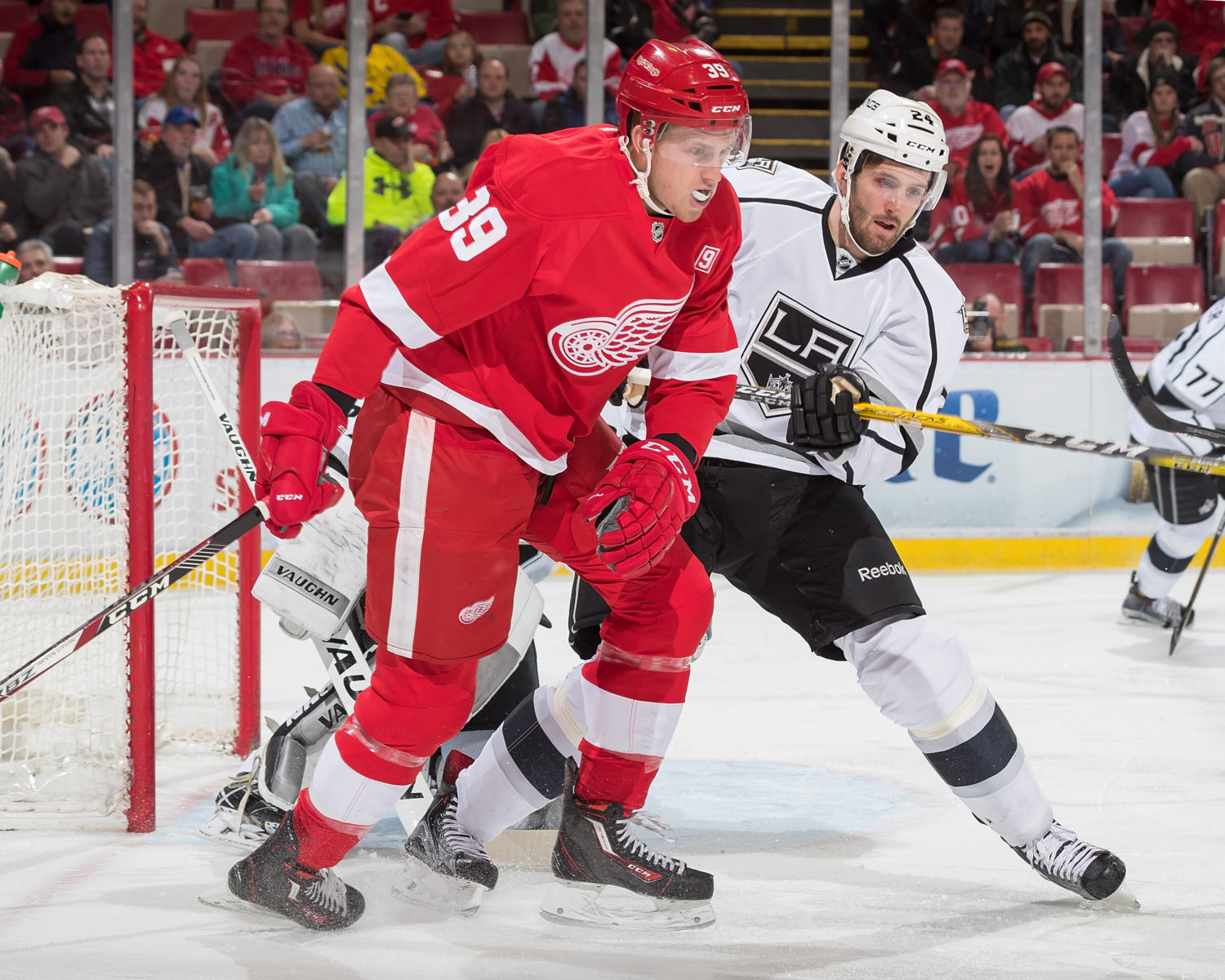If you’re looking for a reason why Los Angeles has allowed two or fewer goals in regulation in five of the last six games, look no further than the penalty kill, which is a perfect 19-for-19 since the 5-4 shootout loss to Montreal on December 4.
“I think penalty killing wins you more games than power plays do, that’s for sure,” Darryl Sutter said Wednesday.
That’s certainly been the case in each of the last three wins, in which the team was a perfect 4-for-4 against Ottawa, Detroit and Pittsburgh. In their most recent game, a thoroughly compelling 3-2 shootout loss to Columbus two nights ago, the team killed off two early penalties against the league’s top-ranked power play unit and built momentum from their early success, out-shooting and out-attempting a team that ultimately won its 10th consecutive game.
The Blue Jackets had found success in spacing out the penalty kill and trying for a backdoor, far-post pass, but that play was ably defended as Kings defenders got their sticks on pucks bound for players in high-danger locations on the ice.
“I think the coaches, especially Johnny (Associate Coach John Stevens), they do a good job of pre-scouting every team and kind of seeing what their tendencies are,” Anze Kopitar said. “But I still think that the biggest thing for us is just worry about what we’re doing. Obviously we’re trying to be aggressive as much as we can and just kind of creating turnovers off of that and obviously faceoffs are a big part of that which we’ve managed to be quite good at it. So, I think it’s a combination of everything.”
Darryl Sutter noted that the faceoffs when killing penalties was among the “nuances” that have changed recently in addition to the number of penalties called. There aren’t as many infractions as there might have been 10 years ago, or in earlier eras.
“If you’re just basing it on the trip, I think we’ve had 10 power plays in five games and 15 kills, so that’s a three-to-two penalty thing, right? Now if you can keep it in that three-and-under, and we’re seeing teams that have two – we’ve had one game on this trip with zero power plays, one game on this trip with one power play, one game with two. And you break it into periods, and things like that. It’s interesting.”
This current seven-game stretch is the longest the Kings have gone without allowing a power play goal since February 14 – March 1, 2015, an eight-game stretch. After earlier season inconsistency, the team ranks eighth in the league with an 83.8% penalty killing rate.
PK defense pairs – Shots and goal rates against (>30 mins).
LA, CGY, and FLA (x2) have good PK killing pairs.
BUF/COL pairs struggling. pic.twitter.com/3YeoXE8J0a— Sean Tierney (@ChartingHockey) December 21, 2016
Trevor Lewis, on the recent strength of the penalty kill:
Yeah, I mean, I think our coaches put together a good pre-scout there for us, and it’s just kind of about execution and [Tuesday] night I thought we were pretty good at taking away lanes and stuff like that.
Lewis, on whether success on the penalty kill comes from a certain mindset:
Yeah, I think so. I think it’s all about the commitment and the shot lanes and just kind of bearing down like that. Obviously our D have been doing a really good job all year of blocking those shots from the point and I think lately our forwards have been getting in more lanes and that’s helping us a lot.
Lewis, on whether there have been under-recognized members of the penalty kill:
Yeah, I mean, Shorezy and Kinger, they’ve ended up going together a lot here and they’ve been going a lot, too. They’ve been doing a great job just getting sticks in lanes and taking away space from their skill players.
Derek Forbort, on the evolution on how he’s coached or trained since joining the Kings:
I think right away you want to build a foundation, like what your game is going to be every night. I think as you get more experience you start kind of going in to other areas, like maybe jumping in the rush offensively, and getting more pucks to the net and little things like that. But I think the big thing for me when I first got here was building my foundation of having a good stick, being physical, just breaking the puck out of the zone, so that’s kind of what I go back to at the start of every game is just being good with my foundation and what makes me a good player and going from there.
Forbort, on any moment where he started looking for something more than passing the puck:
Yeah, I think for me it was like going through my progressions. If I see a guy open I’m going to give it to him but you know, if he’s not open then maybe trying to wait and kill a little time and wait for someone else to get open.


Rules for Blog Commenting
Repeated violations of the blog rules will result in site bans, commensurate with the nature and number of offenses.
Please flag any comments that violate the site rules for moderation. For immediate problems regarding problematic posts, please email zdooley@lakings.com.